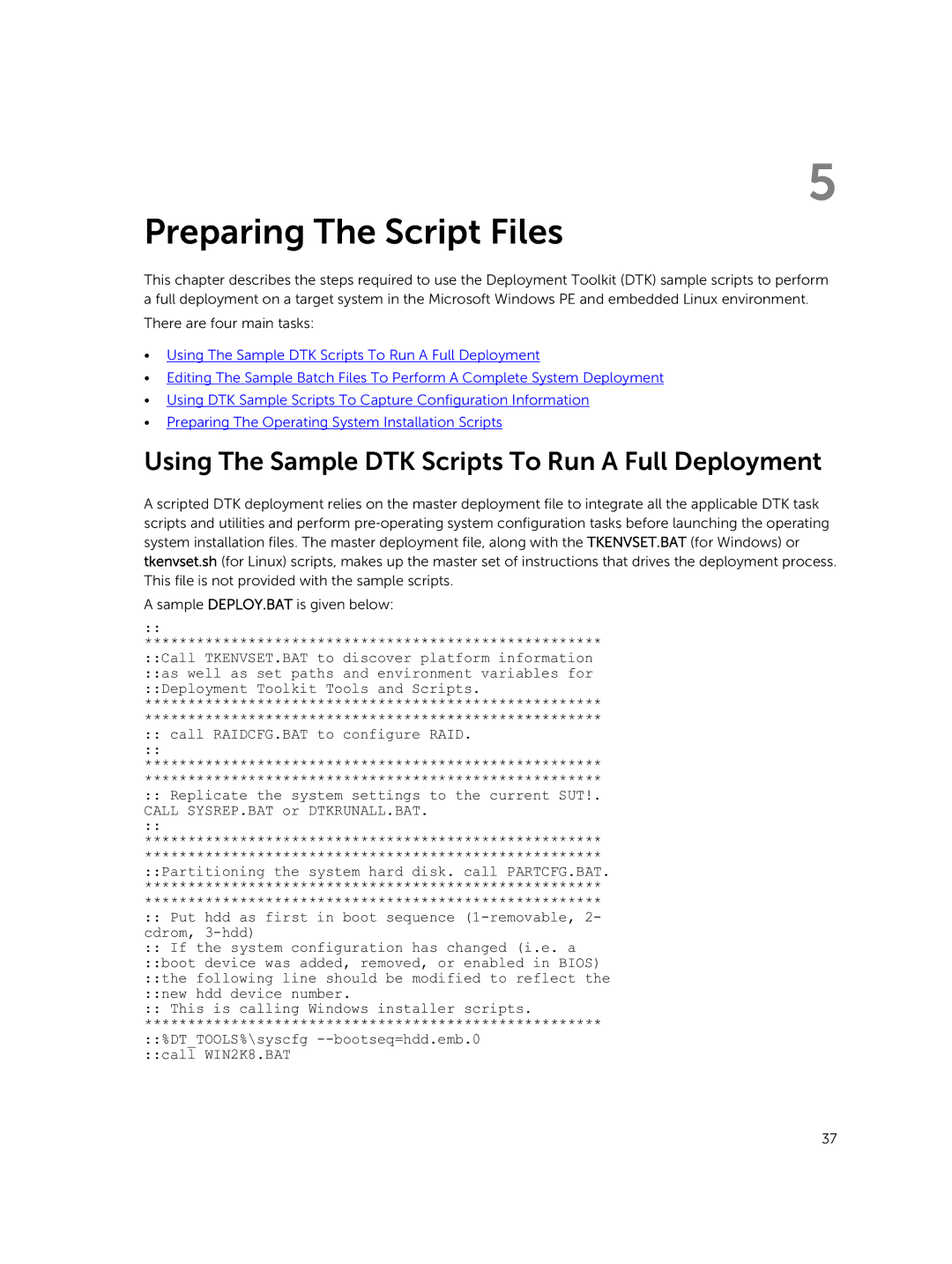5
Preparing The Script Files
This chapter describes the steps required to use the Deployment Toolkit (DTK) sample scripts to perform a full deployment on a target system in the Microsoft Windows PE and embedded Linux environment.
There are four main tasks:
•Using The Sample DTK Scripts To Run A Full Deployment
•Editing The Sample Batch Files To Perform A Complete System Deployment
•Using DTK Sample Scripts To Capture Configuration Information
•Preparing The Operating System Installation Scripts
Using The Sample DTK Scripts To Run A Full Deployment
A scripted DTK deployment relies on the master deployment file to integrate all the applicable DTK task scripts and utilities and perform pre‑operating system configuration tasks before launching the operating system installation files. The master deployment file, along with the TKENVSET.BAT (for Windows) or tkenvset.sh (for Linux) scripts, makes up the master set of instructions that drives the deployment process. This file is not provided with the sample scripts.
A sample DEPLOY.BAT is given below:
::
*****************************************************
::Call TKENVSET.BAT to discover platform information ::as well as set paths and environment variables for ::Deployment Toolkit Tools and Scripts.
*****************************************************
*****************************************************
::call RAIDCFG.BAT to configure RAID.
*****************************************************
*****************************************************
::Replicate the system settings to the current SUT!. CALL SYSREP.BAT or DTKRUNALL.BAT.
*****************************************************
*****************************************************
::Partitioning the system hard disk. call PARTCFG.BAT.
*****************************************************
*****************************************************
::Put hdd as first in boot sequence
::If the system configuration has changed (i.e. a
::boot device was added, removed, or enabled in BIOS) ::the following line should be modified to reflect the ::new hdd device number.
::This is calling Windows installer scripts.
*****************************************************
::%DT_TOOLS%\syscfg
37
